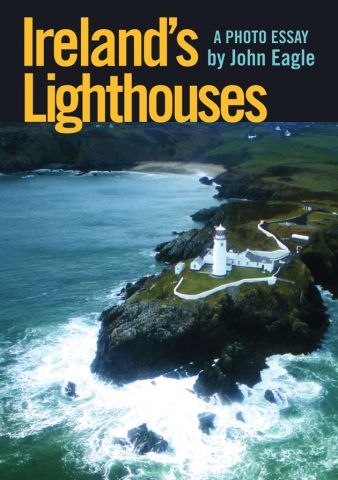Displaying items by tag: book review
Book Review: Great Passenger Ships by William H. Miller
The decade 1910–20 was truly dramatic. It was an age of evolution, when size and speed were almost the ultimate considerations – it was the Industrial Age reaching for new heights, new dimensions, breaking records. In response ocean liners were becoming bigger, longer, taller and faster. The larger liners were certainly becoming grander, it was the age of the 'floating palace'. The Olympic, Titanic and Britannic; Lusitania, Mauretania and Aquitania; the France; and the Vaterland, Imperator and Bismarck are among the greatest and most loved liners, the apotheosis of twentieth-century builders' and decorators' craft, floating ambassadors of national pride.
It all changed, however as the First World War erupted. Commercial trading was all but suspended completely and instead ships took on new roles. Consuming nearly half of the decade, the First World War transformed luxurious liners into sombre hospital ships, armed merchant cruisers, troop transports – and victims of torpedoes and mines.
· A journey through a time of triumph and tragedy, optimism and loss, progress and setback.
· Featuring mainly previously unpublished images.
Bill Miller, or 'Mr Ocean Liner', has written 70 books on passenger ships and is an acknowledged world expert in his field. He has received the National Maritime History Award in the US, the Silver Ribband Award and he created the passenger ship database for the Ellis Island Immigration Museum. Along with appearing in numerous TV documentaries & news broadcasts, he has been a guest lecturer aboard some 75 different ships, including over 100 voyages with the Cunard Line. He has sailed on over 350 voyages on some 300 ships.

The Catalpa Adventure - Escape to Freedom
A thrilling true story of heroism, adventure and triumph from established children’s writer, Vincent McDonnell. In April 1875 the whaler Catalpa sailed from New Bedford in America, on a daring mission: to rescue six Fenian prisoners from the toughest prison in Western Australia. The Irishmen had been convicted of treason against the British Queen and were considered traitors.
Fearing for their lives, they pleaded with comrades in America to be rescued.
On Easter Monday 1876, the prisoners made their bid for freedom. But their ordeal wasn’t over – the alarm had been raised. A race against time ensued. Would the prisoners reach safety before they were captured? Was the escape doomed to failure?
This is the story of that rescue attempt, a story of courage, endurance and daring, an exciting and thrilling sea story.
Vincent McDonnell from County Mayo lives near Newmarket, County Cork. In 1989 he won the GPA First Fiction Award. He has published three other non-fiction titles for children – The Story of the GAA, Michael Collins – Most Wanted Man and Titanic Tragedy. Winner of numerous
prizes, he has been writer in residence at many venues, including his current residency in Nessan’s Primary School, Limerick. He gives workshops and readings throughout Ireland.
Published in May 2010 • Price: €6.99/ £5.99 • ISBN: 978-1-84889-038-1 • Paperback • 210 x 148 mm • 128 pp
Ireland's Lighthouses by John Eagle
The first time he saw Roche’s Point Lighthouse marking Cork Harbour, John Eagle knew he was smitten. ‘Coming from an inland town, there was so much excitement in the sea,’ he explains, ‘and lighthouses encapsulated all that.’ Lighthouses have played an important role on Ireland’s extensive and dramatic coastline since the fifth century, lighting the way for many a cargo and passenger ship ensuring those who made their living on the sea made it home safely. As Stuart Ruttle, Chief Executive, Commissioners of Irish Lights, says in his foreword to the book, ‘Marking extreme headlands, islets and rock outcrops, lighthouses by necessity were built in those inaccessible locations which challenged design engineers, defied logistics and inflicted hardship on the skilled construction workers who built them all those years ago.’
During a project that lasted over ten years, John made several daring boat and helicopter trips to capture unique images of these wind-swept, wave-lashed buildings. This book brings together these striking photographs with informative text on their details, locations and how to find them. Ireland’s Lighthouses is sure to delight all those fascinated by these isolated guardians of the coast.
John Eagle lives on the Beara Peninsula in West Cork. He was born and raised in Oxford, and studied photography. John has quite a name to live up to: his mother D.S. Eagle co-wrote The Oxford Literary Guide to Great Britain and Ireland with Hilary Carnell. She also edited Harvey's Companion to English Literature and the Oxford Illustrated Dictionary. Circumstances led to his mother buying a house in Eyeries in West Cork. He came to stay with her, and liked it so much he decided to live there in 1991. His work sells around the world and the Irish Landmark Trust, which has acquired unused lighthouse buildings, also commissioned work from him. Flying in helicopters has been part of the thrill, he admits.
Ireland’s Lighthouses - A Photo Essay by John Eagle, Published in May 2010 Price: €19.99/£17.99


























